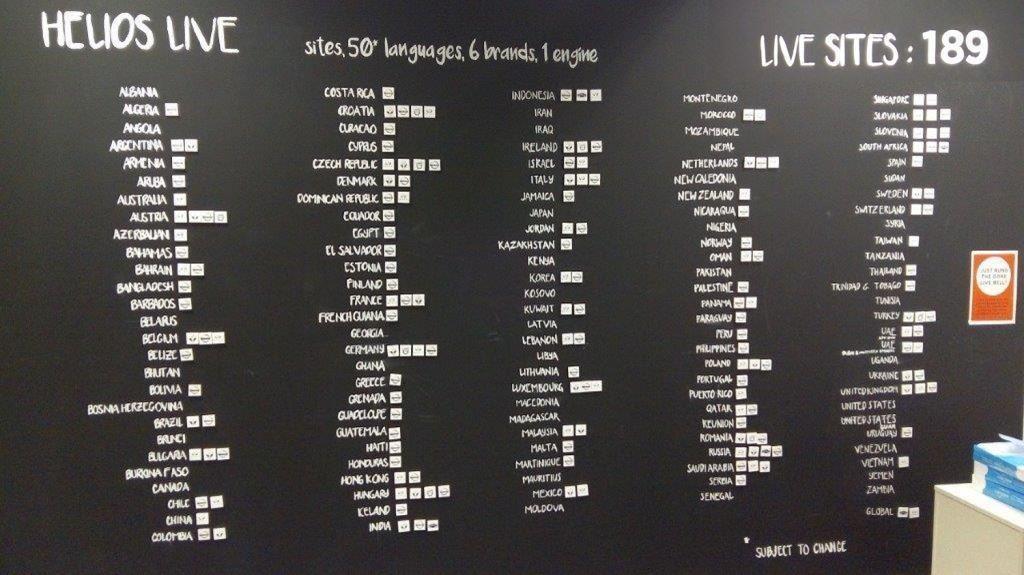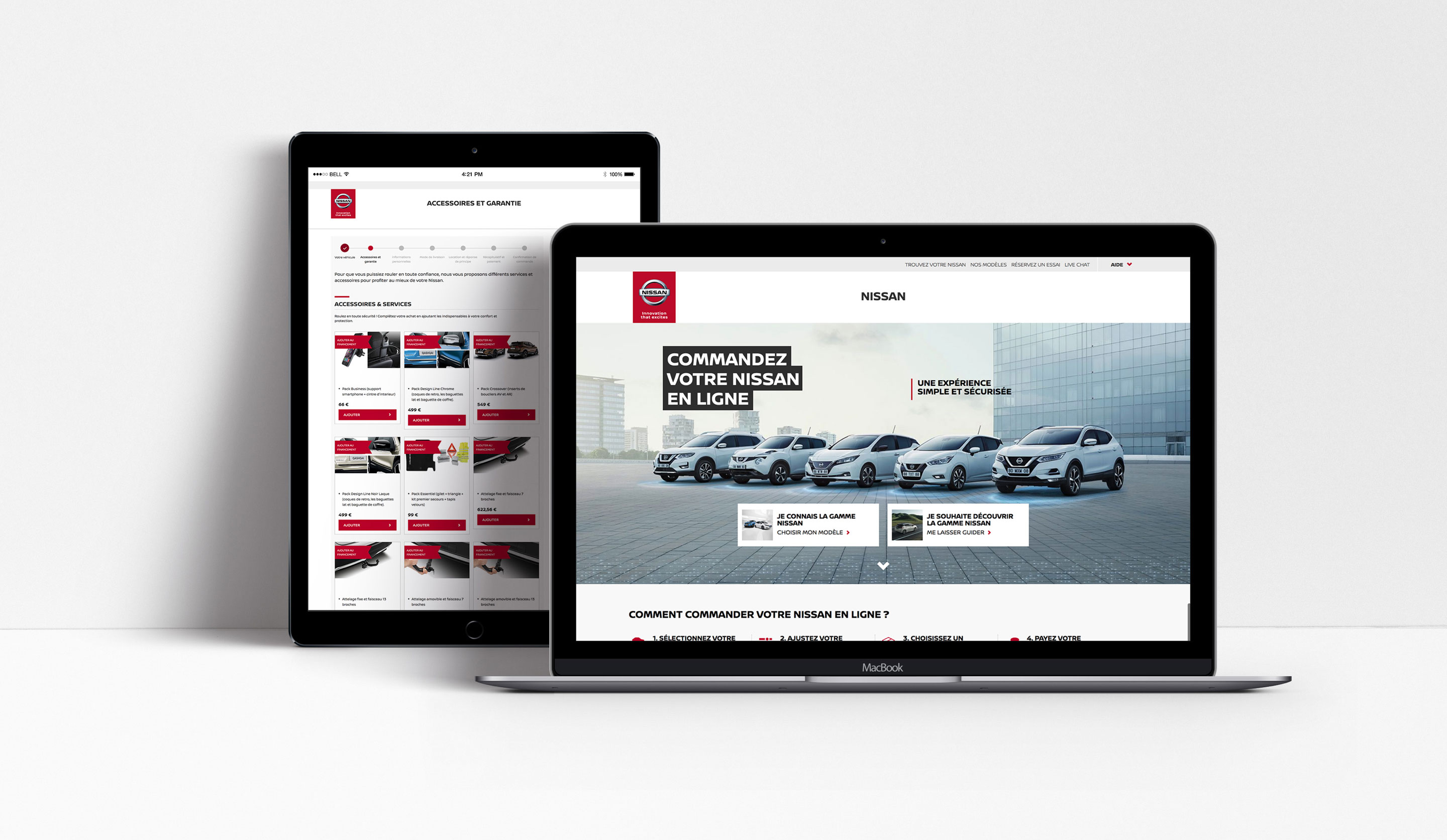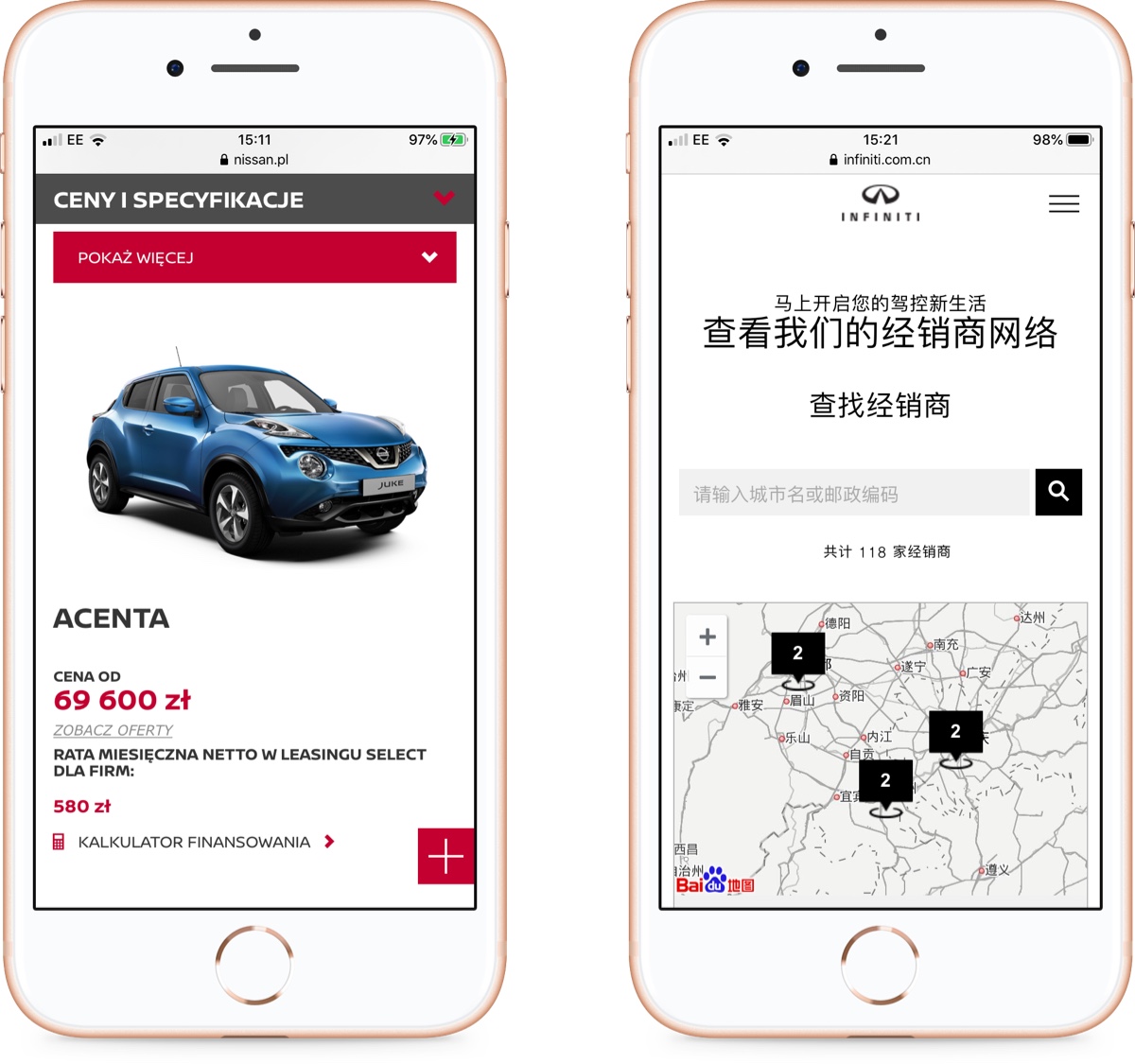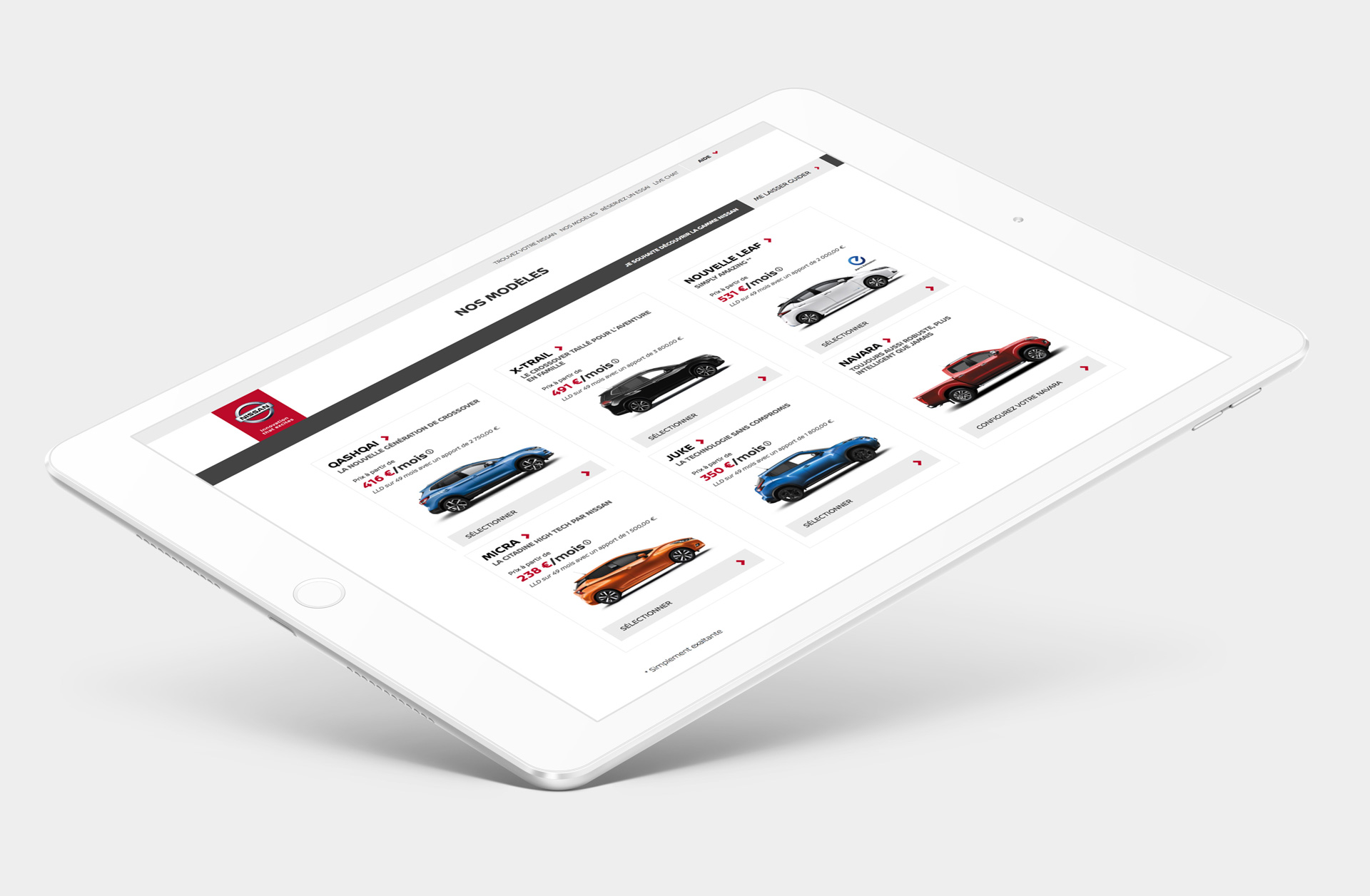Nissan
Global web platform design and optimisation
Due to a strict client NDA only live projects and features are detailed in this case study.
The client

Nissan Motor Company is one of the largest players in the automotive vertical, comprising of three brands - Nissan, Infiniti and Datsun.
My Role
As Sapient's UX Lead on the Nissan programme, I divided my time between leading a team of six UX designers at the agency and collaborating onsite with the client’s global CX team.
For over 18 months, I led multiple streams of work, including…
- Redesigning mobile apps in collaboration with Nissan's offshore developer hubs.
- Designing digital activations and experiences to support new vehicle launches.
- Developing processes to help Nissan's CX team shape ideas and transition design solutions through to platform delivery.
However, my initial challenge was the design, optimisation and rollout of Nissan's global web platform.
The Challenge
The objective was to build a platform that centralised Nissan's diverse ecosystem of regional customer websites. This new global platform would result in driving efficiencies for the business and offer a consistent, optimised experience for users.
The platform needed to manage multiple different product ranges, taxonomies, languages, pricing strategies and currencies - plus bespoke regional business requirements to ensure usability and legislative conformance across markets. We also had to roll this out for all three brands.
It was a huge effort, both in terms of its size and complexity. In fact, it is now largest platform build ever undertaken using Adobe's Experience Manager CMS.

Regional platform rollout status board
The process
Working closely with client product owners, my team and I were responsible for using research findings, analytics data and requirements to drive the design of new global features and components, while continuously optimising the experience for specific markets.
I collaborated within multidisciplinary teams and worked in sprints using JIRA and Confluence to manage our workflow. Typically, I would sketch user flows and refine ideas into annotated wireframes, prototypes or storyboards for testing, before presenting to global and regional product owners at Nissan.
After sign-off, I was responsible for working with technical architects and offshore development teams to ensure the quality of the built experience, before producing final UX specification documentation, to add to our project component library.
I had the opportunity to directly impact most areas of the platform, including the vehicle configurator, book a service flow, dealer locator tool, vehicle product pages, specs pages, finance calculators and multiple editorial components.

Brand sites viewed on laptop and tablet
Multidisciplinary Team
- UX Designer (me!)
- Visual Designer
- Project Manager
- Business Analyst
- Technical Architect
- QA Lead
- Offshore dev/QA teams
Skills Used
- User flows and journeys
- Annotated wireframes
- Lo-fi and hi-fi prototyping
- Presenting to senior stakeholders
- UX specs and documentation
- Design QA with offshore team
- UX team lead and oversee
Global Solution Vs Market Needs
We designed platform components so that they could be authored globally. This meant ensuring there was enough flexibility to handle language, alphabet, currency and right-to-left text options in the CMS.
However, many of the markets had their own specific needs - such as legal or regulatory requirements - that I also had to address during the solution design process.
For example, Poland has strict advertising laws that led us to increase the visibility of APR values in all pricing components across their brand sites. While Google Maps, our standard map for the dealer locator tool, is illegal in China. This meant we had to integrate Baidu maps as an alternative for this region.

Polish APR value (Nissan) and Chinese map integration (Infiniti)
Qualitative Feedback
A valuable resource for my work was ongoing customer research and user testing that was conducted by Nissan's regional teams to gain market-specific insights.
By looking at customer survey logs, I identified that most of the negative feedback was due to the configurator - a tool that enabled users to customise and explore a 360 model of their vehicle and understand more accurate pricing.
The issues were occurring on larger viewports, where the price panel often overlapped the vehicle 360 image, meaning users' were unable see the vehicle update as they built their car and the 360 vehicle image became unusable.
The overlapping typically occurred when users were browsing with reduced height viewports and when multiple offers had been authored in the panel, which increased its height by up to 40%.
I analysed the way the panel responded across different viewports with varying quantities of content and revisited the layout of the panel content, in order to reduce height and minimise overlapping occurring. Finally, I added a toggle that enabled users to hide/reveal the price panel incase these issues still arose for edge cases.

Configurator price/panel toggle functionality improvement (Nissan Australia)
At launch, negative comments around the configurator price panel dramatically decreased. Users can now fully interact with the 360 degree vehicle image, friction has been reduced during the vehicle selection process and overall customer satisfaction has increased.
Conversion Rate Optimisation
Working collaboratively with the Nissan CRO team, I ran A/B tests on the range pages to determine if a move to a 2-column layout would increase clickthrough to product pages on smaller mobile viewports.
Our hypothesis was that if users could see a higher number of models on page load, it would reduce the need for scrolling and make it easier for users to compare models - in turn, better supporting the users' vehicle selection experience.

Tested 1-column versus new 2-column mobile layouts
When we tested the new 2-column design, we saw a 40% increase clickthrough to product pages, from which users take the next step in the journey to purchase.
Business Impact
The rollout of the platform has brought a consistent digital experience to all three brands across 105 countries.
The platform received 600 million global visits and optimisations directly led to a significant 79% uplift in dealer contacts. One Asian market even saw a 900% increase in the number of test drives.
Gartner listed Nissan Pre Sales customer experience as "gifted" among the top 10 US auto brands, while JD Power ranked the Infiniti mobile experience as #1 among all luxury automotive brands.

Tablet view of the model selector feature (Nissan France)
Want to see more?
Learn how I helped an art supplies brand manage its digital assets